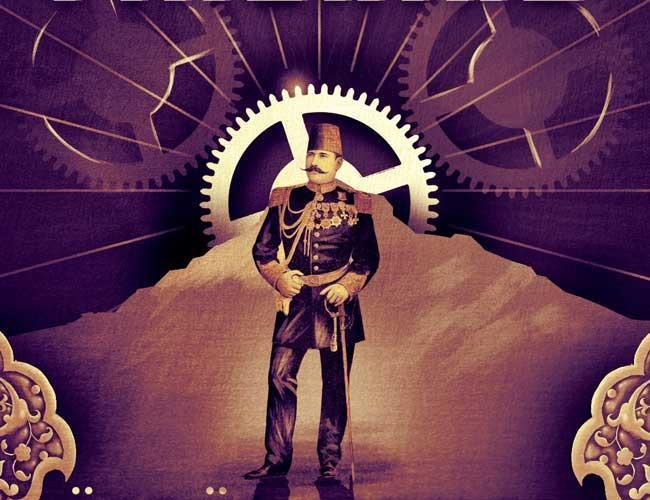
‘The Peace Machine’ by Özgür Mumcu, translated by Mark David Wyers (Pushkin Press, 224 pages, £13)
“The Peace Machine” by Turkish writer Özgür Mumcu is a carnivalesque slice of Ottoman steampunk, taking readers from Istanbul to the heart of Europe in the early 1900s. Full of ideas, enthusiasm and gusto, the novel sweeps from Istanbul to Paris to Belgrade in the years before the outbreak of the First World War.
 Central character Celal is an unassuming author of orientalist erotic fiction who pens books that are “strictly forbidden yet read in secret by students, corporals, generals and parliamentarians alike.” He writes under the pseudonym Şerif Efendi and has to be careful in an “Istanbul crawling with Sultan Abdülhamid’s spies.” Following a sequence of misfortunes he is forced to flee to a friend in France, where his publisher and illustrator also live.
Central character Celal is an unassuming author of orientalist erotic fiction who pens books that are “strictly forbidden yet read in secret by students, corporals, generals and parliamentarians alike.” He writes under the pseudonym Şerif Efendi and has to be careful in an “Istanbul crawling with Sultan Abdülhamid’s spies.” Following a sequence of misfortunes he is forced to flee to a friend in France, where his publisher and illustrator also live.
Upon arrival Celal is hurled into a cascading series of events that ultimately leads him to Sahir, an energetic revolutionary who has invented a “peace machine” aiming to put an end to all violence by influencing people’s minds via cutting-edge electromagnetic science. “The electric currents suppress certain regions in the brain and stimulate others. And just as a massage for the body loosens up the joints and helps the body relax, this has a soothing effect on the brain,” Sahir tells Celal.
The scheme has echoes of cod-scientism and idealistic pre-First World War positivism. “Good and evil, compassion and cruelty – they all set up different vibrations in the soul. If we could measure those vibrations, we could create a peace machine capable of blocking those waves spread in the soul by wickedness and cruelty,” enthuses Sahir, who links the machine to his plan to foment revolutions against old regimes across Europe.
The peace machine is conceived at a time when breakneck technological developments hold both great promise and great threat. “Across the world there are immense war machines designed for the sole purpose of killing,” says Sahir. “We will build a peace machine to oppose their war machines, and once our machine has done its work on people’s minds and souls nobody will ever think of war again.” The novel references the first Zeppelins going up elsewhere in Europe, inspiring both awe and fear. “The cure for this new world run by engines and electricity is that very same technology. If we don’t do something, we’ll destroy each other. The peace machine was designed so that machines won’t kill us all,” says one of the revolutionaries. The machine itself is effectively an attempt to end all causes, to end history. By the end of the novel the contrast between naïve idealism and practical realism is teased out.
Mumcu is best known in Turkey as a writer currently at the independent Cumhuriyet newspaper. “The Peace Machine” is his first novel and it shows. The narrative skips along briskly from one scene to the next, often leaving the reader adrift amid a whirlwind of set pieces. The novel is set in the years before the First World War but we get little contextual detail and little sense of mounting tension. Although the novel is very dialogue-heavy, character development is almost non-existent.
The translation successfully captures an unaffected sense of period language, but the vivid imagery and shallow characterizations of “The Peace Machine” sometimes feel like they would work better in a graphic novel. Ultimately the book feels like a missed opportunity, full of interesting leads too hastily executed.
* Follow the Turkey Book Talk podcast via iTunes here, Stitcher here, Podbean here, or Facebook here, or Twitter here.